#black music matters
Text
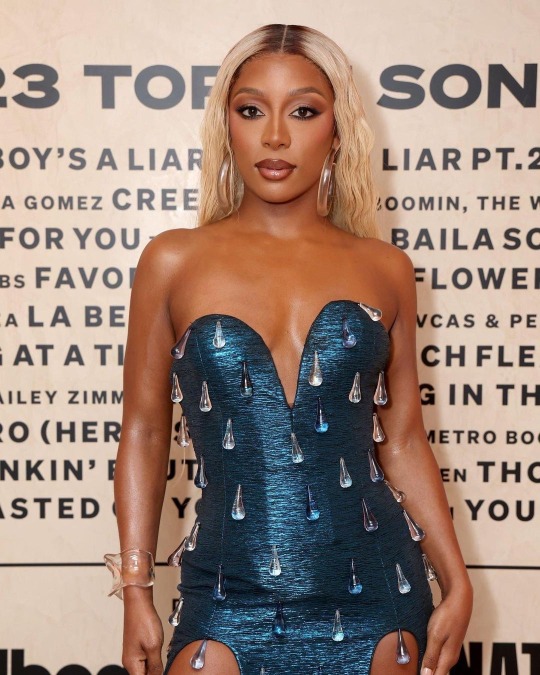

Victoria Monét at the Variety Hitmakers Brunch 🥂🍾
#victoria monét#victoriamonet#victoriamonét#victoria monet#victoriamonetedit#vmonetedit#variety hitmakers#black girl magic#black women#black tumblr#hot celebs#black girl aesthetic#black girl moodboard#black musicians#black music matters#black artist#black beauty#womendaily#woc artist#woc beauty#queer woc#woman beauty#gorgeous women#women of color#fine ass women#beautiful women#pocdaily#r&b music#r&b girls#r&b artist
517 notes
·
View notes
Text
-> Black Punks Exist
🔥 Pure Hell 💥
Black punk band from the 70’s. Similar to many other punk artists at the time. Check ‘em’ out!
xx Support Black Punk Artists xx
#punk music#punk rock#crust punk#punk aesthetic#80s punk#post punk#black tumblr#black excellence#black music matters#black music#black alternative#alternative#rock n roll#70s icons#70s punk#hardcore punk#punk#Spotify
242 notes
·
View notes
Text

#sam cooke#black culture#black archives#black music#50s music#60s music#black music matters#50s nostalgia#60s nostalgia#music
117 notes
·
View notes
Text
Country is returning back to black people
The world is healing

Black county artist Reyna Roberts she’s blaxican too 👀
#black tumblr#funny#meme#country#texas#black music matters#black artists#me#black#tumblr#text post#nature is healing#the world is healing
17 notes
·
View notes
Text
SZA Wins Best R&B Song for 'SNOOZE ' | 2024 GRAMMYs
#xothemedia#sza sos#sza#dailymusicsource#dailytvandfilm#dailytvsource#2024 grammys#the grammys#grammys#r&b music#musician#black musicians#black music matters#snooze#snooze Sza#lizzo#taylor swift#video#solana rowe#Lana sza#sza lana#grammys 2024
15 notes
·
View notes
Text
AL.com: Legendary R&B singer retiring after 54 years: ‘It’s been a great ride through the decades’
Frankie Beverly, the charismatic frontman of Maze, has announced that he’ll retire this year, after a farewell tour with the R&B band that made him famous.

Six shows were announced this week for Beverly’s “I Wanna Thank You Farewell Tour,” including an April 6 concert at the Mobile Fairgrounds, also known as The Grounds. The dates start on March 22 at the State Farm Arena in Atlanta, and end on May 12 at the Kia Forum in Los Angeles. More tour stops will be announced in the weeks and months to come, according to a press release.

Beverly, 77, is a favorite in Alabama, playing to cheering crowds at concert venues and festivals throughout the state. His signature tunes with Maze range from electric funk to romantic jams to classic R&B, and include “Southern Girl,” “Back in Stride,” “We Are One,” “Golden Time of Day,” “Can’t Get Over You,” “The Morning After,” “Joy and Pain” and “Happy Feelin’s.”
Fans needn’t worry, however, that the band will be defunct when Beverly makes his exit. He plans to hand the microphone to Tony Lindsay, best known as the lead singer for Santana. The band name will change when Beverly leaves, transitioning from Maze Featuring Frankie Beverly to Maze Honoring Frankie Beverly.

“I want to share with my lifelong fans and associates that I’ll be going out on the road one last time, then retire,” Beverly said in a statement to Billboard magazine. “Thank you so much for the support given to me for over 50 years as I pass on the lead vocalist torch to Tony Lindsay. The band will continue on as Maze Honoring Frankie Beverly. It’s been a great ride through the decades. Let the music of my legacy continue.”

Beverly founded Maze in 1970 in his hometown of Philadelphia, initially calling the group Raw Soul. The band changed its name in the mid-’70s, released several albums, 1977-1993, and developed a loyal following throughout the country. Beverly’s all-white attire on stage is one of his trademarks, along with his smooth baritone voice and ability to connect with the crowd.

Frankie Beverly performed with Maze on the Coca-Cola Classic Stage at the 2008 City Stages festival in Birmingham.(AL.com file photo/Frank Couch)
Beverly and Maze have performed many times in Birmingham over the years, at venues that range from Boutwell Auditorium to the Alabama Theatre to the former City Stages festival. A concert typically becomes a big ol’ dance party when Beverly and Maze take the stage; in fact, some ticketholders have been known to bring maracas and use them for appreciative percussion.
Beverly’s farewell tour is produced by the Black Promoters Collective. “Beverly is embarking in this farewell tour before slowing down to enjoy life in his California Bay Area home,” a press release says. The artist plans to “complete the tour with several major city stops. He’ll then make his way to Philadelphia for a street renaming ceremony in the city where he and his group launched their phenomenal musical legacy.”
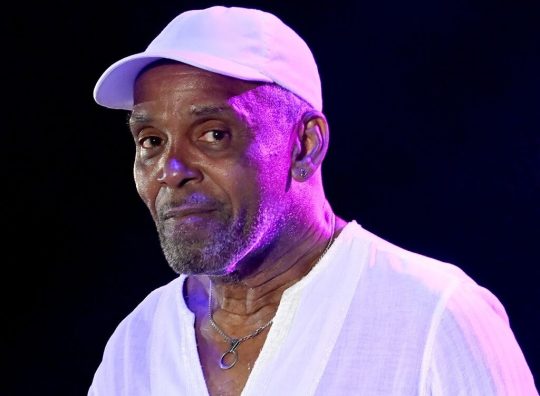
Here are the shows announced thus far for the tour:
March 22, State Farm Arena, Atlanta, Georgia.
April 6. Mobile County Fairgrounds, Mobile, Alabama.
April 13, Toyota Arena, Houston, Texas.
April 27, United Center, Chicago, Illinois.
May 12, KIA Forum, Los Angeles, California.
July 6, Dell Music Center, Philadelphia, Pennsylvania.
ENJOY THE MEMORIES -
youtube
youtube
youtube
youtube
youtube
youtube
#Maze#Frankie Beverly#Legendary R&B singer retiring after 54 years#Black Music Matters#Black Music History#Frankie Beverly and Maze#Frankie Beverly Farewell Tour#Frankie Beverly Retiring#2024#Youtube
3 notes
·
View notes
Text
Holding space: The Archive and Blues Tradition at the University of Chicago
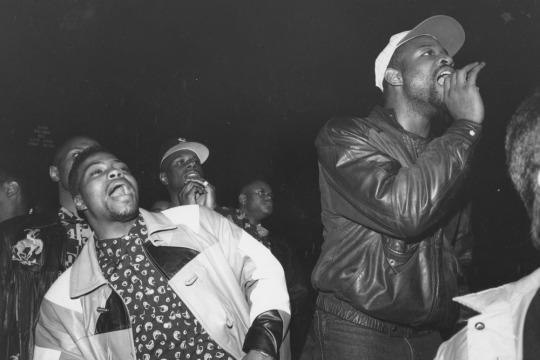
Performance spaces like the Checkerboard Lounge, Theresa’s, Buddy Guy’s Legends, Club DeLisa, Pepper’s Lounge, Gerri’s Palm Tavern, and the Parkway Lounge have, historically, made the City of Chicago synonymous with the Blues. They were critical neighborhood institutions that also helped to forge local community ties and pathways for global connections. However, extant narratives of the history of Chicago Blues are absent of the part that The University of Chicago has played in that formation. So much so, in 2003, journalist Celeste Garrett wrote that the University was “known more for generating Nobel Prize winners than for being a source of the Blues.” This is true. At present, in fact, there are 97 Nobel Prize winners who are or have been associated with the University. However, what is little known about the institution, as the archive reveals, is that The University of Chicago played a small, but crucial, role in fashioning a space and place for the presence and preservation of Chicago Blues history and culture.
Perchance, the University’s manifold attractions and interests and distractions, along with its perceived distance to African American history and lifeworld’s, we tend to disassociate it with such diasporic cultural attractions and productions such as Blues. Contrary to popular belief, the University, equal to the institutions listed above, held space for the blues, its traditions, and celebrated and prepared for its thriving futurity.
In the 1940s, the campus hosted its first blue’s performance. Then, in 1952, the first major concert was produced, with performances by Chick Heston, Preston Jackson, John Henly, William “King” Colax, Ernest Crawford, and Mammy Yancy, headlined by Mahalia Jackson, and sponsored by the “Student Cultural Clubs.” On campus Howlin’ Wolf and Muddy Waters were among the most favored performers and personalities. Howlin’ Wolf first performed at UC in 1960 and at the end of the decade an advertisement in the classifieds of the Daily Maroon read, “Who the hell wants to go to Washington when Howlin’ Wolf is playing right here on campus, tomorrow nite [sic] for only $1.50 (sure beats $25).” And, in 1962, the Salisbury House hosted a dinner for Muddy Waters, engaging him on the blues, his life story, his artistry and aesthetics and philosophy. These events seemed to cement the Blue’s in the cultural landscape of the institution that no one seemed to be aware of in spite of the festivals that grew up there, including the annual Folk Festival organized by the Folk Society, the Blues and Ribs festival that came later, and the Logan Center Bluesfest and the other concerts that were promoted by Enterprise Productions, the Alumni Association, and the Inter Fraternity Council. Though concerts were put on at Mandel Hall, other spaces around campus were (or became) places for the Blues, including Bartlett Gymnasium, Ida Noyes Hall, and, much later, the Logan Center for the Arts.
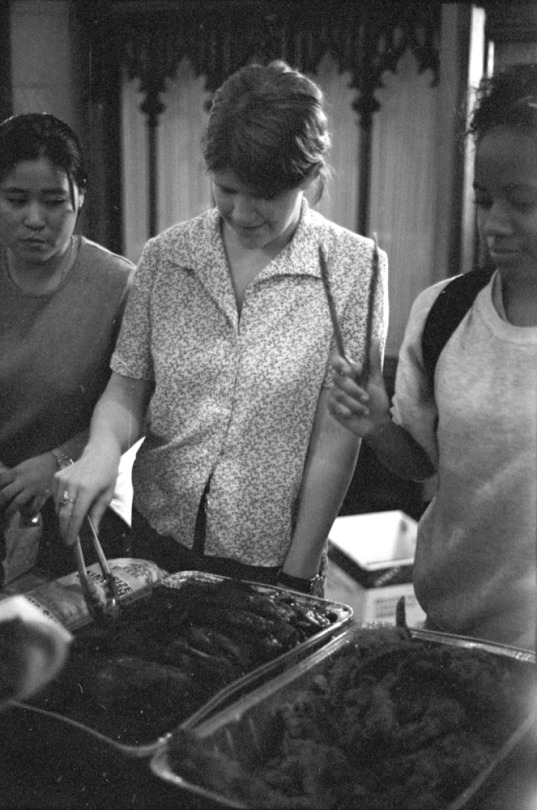
The concerts were not exclusively to student or UC associates; the invites were extended to all interested in the music. Many came to the University for those performances to be baptized and delivered in the holy sonic waters of such artists like Chester Burnett, Big Bill Broonzy, Buddy Guy, James Cotton, Elvin Bishop’s Big Fun Trio, Jimmy Johnson, Eddy Clearwater, Corky Siegel, Lil’ Ed, and Melody Angel, Willie Dixon, Elizabeth Cotten, “Mississippi” John Hurt, Roscoe Holcomb, the Stanley Brothers, Paul Butterfield, Louis Killen, Koko Taylor, and Billy Branch, among many others. As with the blues performances scattered about the city, reverberating the blues houses near and far, the clientele that patronized the university concerts, came to lay down the quotidian, the stuff that invented the blues, what Houston Baker surmised as the “world of transience, instability, hard luck, brutalizing work, lost love, minimal security, and enduring human wit and resourcefulness in the face of disaster.”
What’s more, the University of Chicago offered to help preserve the culture of the blues in the city by keeping the Checkerboard Lounge open (that closed in 2003, but reopened in Hyde Park in 2005), while many of the other clubs that helped to place Chicago Blue’s on the map have closed. During the early negotiations of this transition, former UC Vice President for Community and Government Affairs, referring to these historical neighborhood institutions, most notably the Checkerboard, argued for this rescue plan saying, “It’s an important place in history in a city where it’s important to preserve it.” He was right.
The University of Chicago’s influence doesn’t end there: the institution has been acknowledged for its impact on the Nobel Prize winning blues instrumentalist Henry Threadgill, who learned avant-garde classical music attending performances of the Contemporary Chamber Players at the University of Chicago growing up. As well as Elvin Bishop, another Chicago native, of the Elvin Bishop Group, who also attended classes at the University of Chicago, who made the Southside and West Side digs his classroom as well. And there are others, not to mention, Paul Butterfield whose band, as Paul Eisenberg reported earlier this year, The Butterfield Blues Band was formed out of the many activities surrounding the blues festival that was organized at the University of Chicago. The band went on to become a major influence abroad spreading the Chicago-style blues abroad, furthering the legacy of the many blues artists who descended upon the city many years prior.
This dive here is but a brief one; perhaps the start of an archival project to investigate the overall impact that the University has had on the Blues community in Chicago, and, more specifically, the African American community throughout the Southside who favored the institution as their scene for blues performances and have recollections regarding it as a site of memory. Howard Reich noted in 2005 that “. . . Chicago blues are everywhere in this town – if you know how to listen.” It appears that the sonic resonances of the blues are everywhere in the University’s archives. By listening to the archive available at the University, then, where it intersects with the Blue’s scene across the city and, most notably, within the Black community, researchers might find other profound socially based reverberations and hidden histories of the blue’s, reflecting and fomenting other realities and pathways for understanding the past and present conditions of Chicago’s communities.
Literary scholar Steve Tracy reminds us that “. . . the blues provides ‘a structured but expansive place for the individual to relate to and express the community, and for artists to touch home base but still express themselves individually.” We are uniquely positioned to expand with deeper dives into the library’s digitized collections (including the Campus Publications and the Photographic Archives) and University Archives, to discover and institute pathways for transformative community building and public history projects.
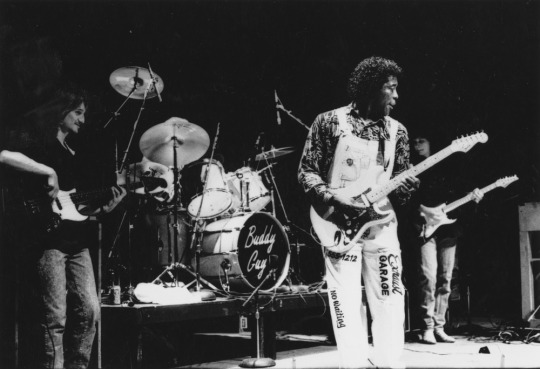
Images Top to Bottom:
Audience enjoying a Blues concert, circa 1990s. Photograph by Adam Lisberg, Chicago Maroon. UChicago Photographic Archive apf7-03946.
Three young women enjoy barbecued ribs at the Blues and Ribs festival in the University of Chicago's Ida Noyes Hall, October 1997. Photograph by Melody Weinstein, Chicago Maroon. UChicago Photographic Archive apf7-05986-001.
Buddy Guy plays a concert with his band in Mandel Hall at the University of Chicago, January 24, 1992. Photograph by Richard Kornylak, Chicago Maroon. UChicago Photographic Archive apf7-03949-002.
13 notes
·
View notes
Text
Doechii, Megan Thee Stallion, Lizzo, Rico Nasty, Syd, Sexy Red, Willow, GloRilla, SZA, Beyonce India Arie, Brittany Howard, Coi Leray, H.E.R. Normani, Ari Lennox, Cardi B, Leanne Le Havas
What a variety of Black women in music genres!
1 note
·
View note
Text
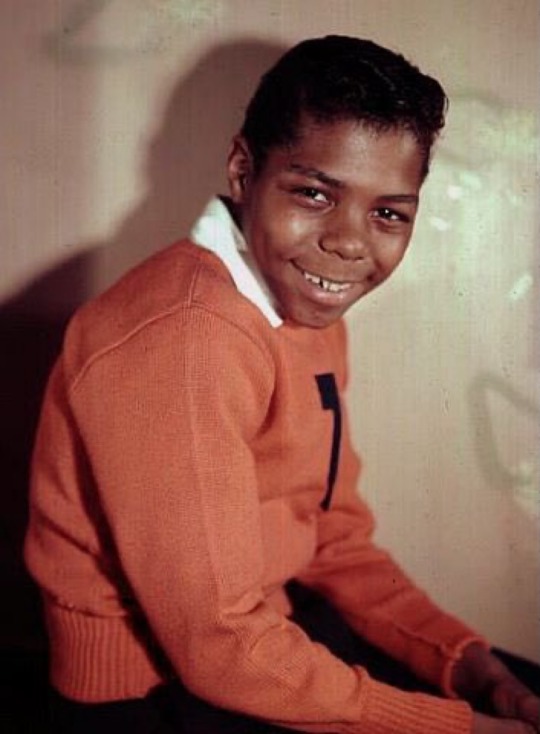
Happy birthday Frankie Lymon! 🕊️


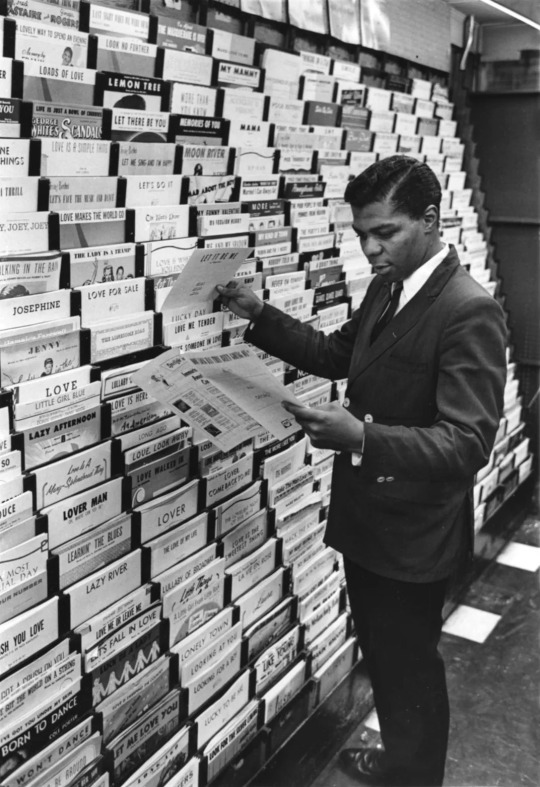
#black tumblr#247lc#hollywood#throwback#music#new york city#hip hop#247 live culture#actor#interview#old school#Frankie lymon#black culture#happy birthday#black music matters
1 note
·
View note
Text
CCR ripped off Howlin Wolf with basically every track and never got sued over it, but they sued people over ripping off their sample of Howlin Wolf 😂😭😂dude fuck CCR i gotta sample their stuff haha might mess around and go weird al on their ass
#black lives matter#black music matters#yo if it comes down to it#i would rather sample the greatness and pay royalties#i ain't about to get sued by a mentor#nah i will pay generous royalties and invite collaboration#musician thoughts#blues
2 notes
·
View notes
Text
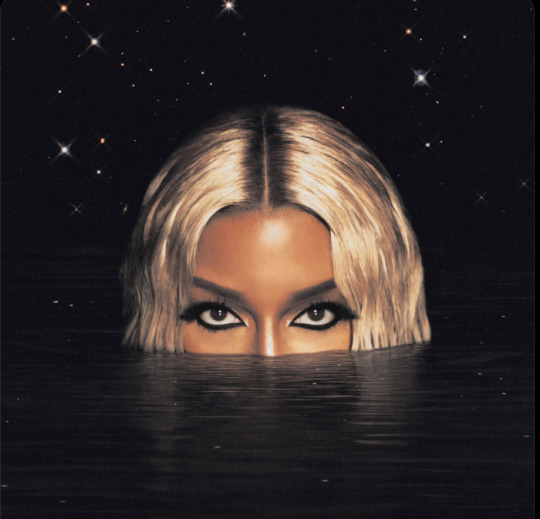
VICTORIA MONÉT IS NOMINATED FOR SEVEN GRAMMYS INCLUDING:
🤎 Best New Artist
🤎 Best R&B Album - Jaguar II
🤎 Best R&B Song - On My Mama
🤎 Best Traditional R&B - Hollywood
🤎 Record of the Year - On My Mama
🤎 Best Engineered Album - Jaguar II
🤎 Best R&B Performance - How Does It Make You Feel
#victoria monét#victoriamonet#victoria monet#vmonetedit#grammys#grammy nominee#grammy nomination#black girl magic#black women#black tumblr#hot celebs#jaguar 2#dailywoc#dailymusicians#dailywomen#woc beauty#queer woc#woman beauty#black music matters#r&b music#black musicians#music#r&b girls#r&b artist#r&b#r&b singer#wocdaily#wocedit#womendaily#woc artist
386 notes
·
View notes
Text
❤️🔥❤️🔥❤️🔥
0 notes
Text
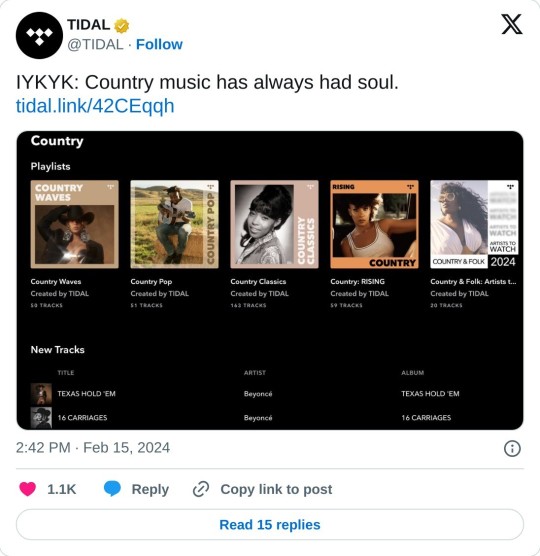
Exactly, Tidal. Exactly!!!
#black music matters#black culture#black excellence#black musicians#black music history#country#country music#Instagram#Mood for every month especially black history month ✊🏾✊🏿✊🏽#blacklivesmatter✊🏽✊🏾✊🏿#black lives matter#blm#black lives fucking matter#black lives movement#all black lives matter#black history month#i’m black
1 note
·
View note
Text
Theme song 🔥
#music#dungeon family#outkast#goodie mob#hip hop#rap#southern rap#black artist#black music history#black music matters#black musicians#atlanta#black power#Spotify
1 note
·
View note
Text
Asake ft. H.E.R. | “Lonely At The Top (Acoustic)”
#asake#h.e.r.#h.e.r music#gabi wilson#Gabrielle Wilson#xothemedia#video#music video#black movie#black music matters#afrobeats#dailymusicsource#lonely at the top#lonely at the top remix#lonely at the top Asake
2 notes
·
View notes
Text


Image: courtesy of Ricky Codio/Ricky Codio Photography
“The creation of Black Music Month was the brainchild of Grammy Award winning songwriter/producer and one of the architects of The Sound of Philadelphia (TSOP) Kenny Gamble,” schools Dyana Williams, the music industry veteran and celebrity strategist. The songwriter/producer—along with his partner Leon Huff—has created countless classics, including “If You Don’t Know Me By Now,” originally recorded by Harold Melvin and the Blue Notes; “For the Love of Money” by The O’Jays; and Teddy Pendergrass’ “Turn Off the Lights.”
“When he established the Black Music Association in the late 1970s, we were a couple at that point; we had two children,” continues Williams, whose illustrious road to premier Black music advocate and tag as “the Mother of Black Music Month” began as a radio pioneer, holding her own on the airwaves during a time when women were woefully underrepresented.
It was a collective effort to that day on June 7, 1979 when President Jimmy Carter hosted the reception at the White House that made Black Music Month official. Williams, who played a critical role, describes it as “a coming together of various aspects of the music industry to celebrate and recognize this multibillion-dollar industry, not just the songwriters and the singers, people behind the scenes as well.”
Williams' love of Black music, she shares, was sparked in her native New York City at a very early age. As a child, Williams learned how to dissect music. She grew up knowing where songs were recorded, who wrote them, who sang them, who played on them, who engineered them, who produced them and more. Later the daughter of Puerto Rican parents would mix and mingle with those same folks, even dating musicians as well as forming meaningful relationships with many other titans. City College of New York’s radio station WCCR gave her the first taste of what being a behind-the-scenes mover and shaker could be.
“I was the music director. I had a jazz show, but I also availed myself of student funds to produce concerts to bring artists to the school,” she says. At a time when very few women were on the air, she took her cues from one legendary figure who is today best known for Mama, I Want To Sing!. “Vy Higginsen was on the radio at WBLS and she's the first Black woman that I listened to that inspired me to want to be on the radio,” shares Williams.
Although radio no longer physically occupies as much of her time as it did throughout her life, even as she raised her three kids, Black music still keeps her busy. She is the president and founder of the International Association of African-American Music Foundation, which organizes conferences and educational symposiums as well as produces panels that communicate the vastness of Black music. In addition, IAAAM has honored many Black music greats, including Stevie Wonder, Patti LaBelle, Jimmy Jam and Terry Lewis, Babyface and L.A. Reid. She’s also a board member of the Nashville-based National Museum of African American Music (NMAAM), which recently honored Missy Elliott. TV One fans also recognize her as a frequent and trusted contributor to the network’s acclaimed series Unsung.
Even as Williams enters her 70s later this year, advocating for Black music is a personal mission and calling from which she can’t retire. And for good reason. “Black music deserves champions and advocates, and that's what I see myself as,” she insists. “Black Music is American music created in this country and exported culturally, but also economically. We don't tend to think of it that way, but the reality is that Black music is big business. I'm talking about not millions of dollars, but billions of dollars. We are the trendsetters. We are the weathervane so to speak. We’re the taste. We’re the flavor all over the planet. It is us and I see myself as a person who uses her platform, whether it's social media, whether it is talking with [journalists] to spread the word about the magnificence, the viability, and the power of Black music.”
#‘The Mother of Black Music Month’ Dyana Williams Sets the Record Straight on the Historic Celebration and Why Her Work Is Not Done#Dyana Williams#Black Music Month#Black Music Matters
9 notes
·
View notes